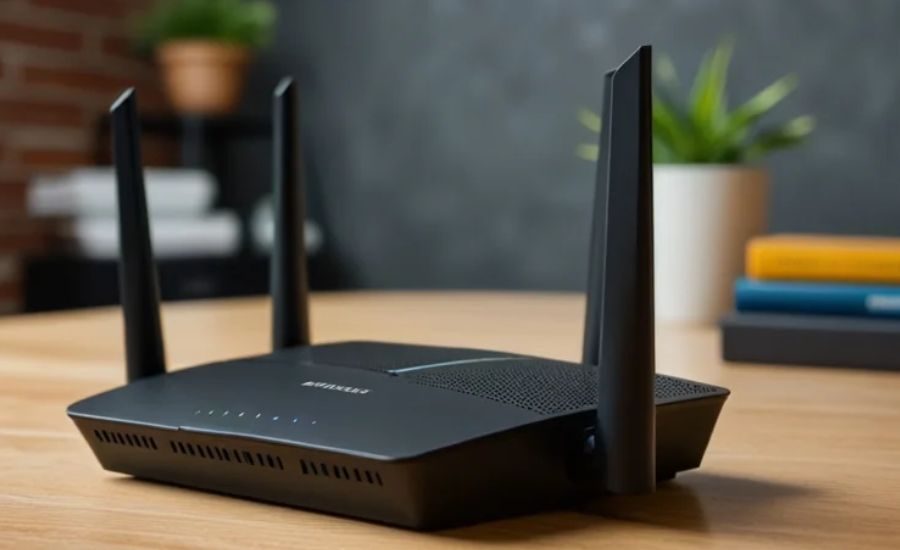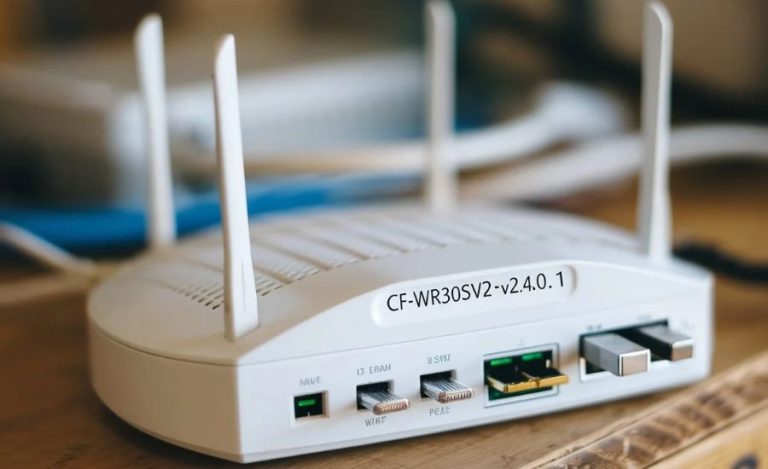How To Add A Device To Mr9600 Static Routing List, Understanding & More
Introduction
To beautify your community’s performance and better control your gadgets, adding a tool to the MR9600’s static routing listing is an powerful solution. This technique allows you to optimize facts go with the flow, supplying more manipulate over how visitors is directed inside your network.
Here’s how you can without problems add a tool to the static routing listing in your MR9600 router: Begin by way of logging into the router’s settings interface. Once there, navigate to the “Add a Static Route” choice. You’ll want to go into the device’s IP address, its subnet mask, and the perfect gateway records. After filling in these info, make sure you store the changes to apply the static direction configuration.
This honest guide guarantees that even the ones with out technical revel in can efficaciously set up static routing. By following the steps, you’ll be able to streamline community visitors, enhancing performance and enhancing normal community management. Whether you’re a novice or a extra superior consumer, putting in static routing at the MR9600 can be accomplished in just a few easy steps. In this article we;ll read about How To Add A Device To Mr9600 Static Routing List.
Understanding Static Routing on the MR9600: A Comprehensive Guide

Static routing is a critical method in network management, used to define specific routes for traffic between devices. Unlike dynamic routing, which automatically adjusts to network conditions and traffic patterns, static routing requires manual configuration. This makes it ideal for stable networks where the layout and devices don’t change frequently. On routers like the MR9600, static routing can help optimize network efficiency, improve security, and enhance performance.
What is Static Routing?
At its center, static routing involves manually configuring precise paths (routes) for statistics to tour via a network. This manner you determine the exact route that data will take to reach precise gadgets or sections of the network. Static routes are in particular powerful in environments in which the network topology is predictable and does not want frequent adjustments. Static routing works via specifying the vacation spot IP cope with, subnet masks, and gateway for every route, presenting fixed paths for information visitors.
How Does Static Routing Benefit Your Network?
Adding a device to the static routing list on your MR9600 router can offer several significant benefits:
Improved Network Stability: By defining clear paths for traffic, static routing ensures that the flow of data remains predictable, which is essential for devices or applications requiring consistent connectivity, such as video conferencing systems or servers.
Enhanced Security: With fixed routes, data is isolated to specific devices, creating dedicated traffic paths. This isolation can improve security by reducing the exposure of sensitive information and limiting access to critical resources within your network.
Better Network Management: Static routing allows for better control over how traffic is distributed across your network. You can prioritize certain devices or traffic types, improving the overall efficiency of your network.
Optimized Performance: With dedicated paths for devices that generate heavy traffic, such as gaming consoles or workstations, static routing can help prevent congestion. This leads to faster, more reliable connections for high-demand devices.
Step-by-Step Guide to Adding a Device to the MR9600 Static Routing List
Adding a device to the static routing list on the MR9600 router is a relatively straightforward process. Follow these steps to configure your router’s static routes effectively.
Step 1: Access the Router’s Admin Settings
Connect to the Router: Use your laptop or mobile tool to connect with the MR9600’s Wi-Fi community or Ethernet connection.
Open a Web Browser: In the browser’s address bar, kind within the router’s IP deal with (usually 192.168.1.1, even though this can range relying on your setup).
Login: Enter the username and password for the admin panel.
If you haven’t custom designed those credentials, the default login statistics can normally be found on a sticky label on the router itself.
Step 2: Locate the Static Routing Settings

Navigate to Advanced Settings: Once logged in, find the menu for “Advanced Settings” or a comparable section where you could get admission to the router’s certain configuration alternatives.
Find the Routing Section: In this menu, look for a category labeled “Routing” or “Static Routing.” Clicking on this option will assist you to configure specific routing settings.
Step 3: Add a New Static Route
Select “Add a Static Route”: Look for the button or link that permits you to add a brand new static route.
This option will begin the configuration process for your new device.
Step 4: Input Device Information
Now you’ll need to provide the essential details for the device you want to add:
IP Address: Enter the static IP cope with of the tool. If the device does not have already got a static IP, you’ll want to assign one. You can locate the tool’s contemporary IP deal with in its network settings.
Subnet Mask: Input the subnet masks for the tool. A commonplace setting is 255.255.255.Zero, however this will range relying on your community configuration.
Gateway: Enter the router’s IP deal with (typically 192.168.1.1), which directs the tool to get right of entry to the broader internet.
Step 5: Save the Settings
Save or Apply the Configuration: After entering the vital records, click on “Save” or “Apply” to finalize the static routing configuration.
Reboot the Router (Optional): Although not constantly vital, restarting the router can make certain that the new settings take effect and help prevent any capability connectivity problems.
Step 6: Verify the Static Route
Once the settings are saved, you should test the connection to verify that the static route is working as expected:
Check Connectivity: Ensure that the device you added can connect to the network without issues. If it does, the static route is correctly configured.
Troubleshoot if Necessary: If you revel in any issues, double-take a look at the IP deal with, subnet mask, and gateway settings. Incorrect entries can disrupt the routing system.
Additional Tips and Troubleshooting
Avoid IP Conflicts: To ensure smooth operation, make sure that the tool’s IP cope with does not warfare with different gadgets for your community. Each device must have a unique static IP.
Assign Static IPs to New Devices: It’s nice practice to assign static IPs to gadgets which you want to add to the routing listing. This ensures that the static course will always factor to the perfect deal with, although the device is rebooted.
Keep Router Firmware Updated: Ensure that your MR9600 router’s firmware is updated. Firmware updates can enhance performance, restore insects, and introduce new capabilities, inclusive of enhancements to routing capability.
Verifying the Static Route
Once you’ve configured the static path, it’s vital to verify that the whole thing is functioning properly. Start by means of using the Ping device, that is typically available in the router’s diagnostic menu. This device permits you to ship a ping request to the tool you’ve introduced to the static routing list. By doing this, you may verify that the device is available and that the course you’ve installation is efficaciously directing visitors.
Additionally, check the router’s routing desk to ensure that the brand new static route is listed and enabled. The routing desk provides a comprehensive evaluate of all lively routes, inclusive of the only you simply delivered. If the whole thing is set up efficiently, your static route could be visible in the table, confirming that it’s energetic and functioning as meant.
If you come upon any troubles during verification, recheck the IP deal with, subnet mask, and gateway settings. Mistakes in those entries can reason disruptions inside the network, stopping the tool from communicating efficaciously. By following these verification steps, you can make sure that the static course works seamlessly and that your community is optimized for reliable and efficient overall performance.
Wrapping Up

Configuring static routing to your Linksys MR9600 can substantially enhance network performance by means of directing site visitors effectively among devices on different subnets. By setting up static routes, you could ensure that facts flows alongside specific paths, lowering network congestion and enhancing reliability for high-priority devices or applications.
This guide presents clear steps that will help you configure, verify, and manipulate static routes, providing you with better manipulate over your community. Once installation, static routes permit gadgets to communicate more effectively and securely, ensuring most useful overall performance throughout your community.
With static routing, you may also reduce the load in your router, because it now not has to make real-time routing choices for every information packet. This streamlined technique helps keep a solid community environment, specially in conditions where traffic patterns are predictable and don’t change regularly.
By following the instructions provided, you may confidently set up static routing on your Linksys MR9600, making sure your community runs smoothly, securely, and with minimum interference. This setup no longer best optimizes information waft but additionally boosts the overall efficiency and responsiveness of your community, permitting devices to carry out at their best.
FACT:
- Static Routing on the MR9600: Static routing involves manually configuring routes to direct data traffic between devices on a network. It is useful for stable networks where the layout and devices do not frequently change.
- Benefits of Static Routing:
- Improved Network Stability: Ensures predictable data flow, which is essential for devices needing consistent connectivity, such as servers or video conferencing systems.
- Enhanced Security: Reduces exposure by isolating traffic to specific devices.
- Better Network Management: Provides control over traffic distribution, allowing prioritization of specific devices or traffic types.
- Optimized Performance: Helps avoid congestion, leading to faster, more reliable connections for high-demand devices.
- Steps to Add a Device to the Static Routing List:
- Access Router Settings: Connect to the router, open a web browser, and log in to the admin panel (typically using IP address 192.168.1.1).
- Locate Static Routing Settings: Navigate to the “Advanced Settings” and find the “Routing” or “Static Routing” section.
- Add Static Route: Input the device’s IP address, subnet mask, and gateway information, then save the settings.
- Verify Connection: Test the connectivity using the router’s Ping tool and check the routing table to confirm the static route is active.
- Troubleshooting:
- Ensure IP address conflicts are avoided.
- Assign static IPs to devices to maintain correct routing.
- Keep router firmware updated for optimal performance.
- Verification:
- Use the Ping tool to check the device’s connection.
- Ensure the new static route appears in the router’s routing table.
By following these steps, you can successfully configure static routing on the Linksys MR9600 to optimize network performance.
FAQs for Adding a Device to the MR9600 Static Routing List
- What is static routing on the MR9600?
- Static routing is the manual configuration of specific paths for data traffic between devices on a network. It is used to direct traffic efficiently, offering better control, stability, and security for devices within the network.
- How do I access the MR9600 router’s settings?
- Connect to the router, open a web browser, and enter the router’s IP address (usually 192.168.1.1). Log in using the admin username and password.
- What information do I need to add a device to the static routing list?
- You will need the device’s static IP address, subnet mask (usually 255.255.255.0), and the router’s gateway IP address (typically 192.168.1.1).
- How do I ensure the static route works after adding a device?
- After saving the settings, use the router’s Ping tool to test the connection and check the router’s routing table to confirm the static route is listed and active.
- What should I do if I encounter connectivity issues after configuring static routing?
- Double-check the device’s IP address, subnet mask, and gateway settings for accuracy. Incorrect entries can disrupt the routing system.
- How can I prevent IP conflicts when adding a device to the static routing list?
- Make sure the device’s IP address is unique within your network. Assign static IPs to avoid conflicts and ensure the static route always points to the correct device.
- Do I need to update the router’s firmware when configuring static routing?
- Yes, keeping the router’s firmware updated is recommended to enhance performance, fix bugs, and improve routing capabilities.
- How can I verify if the static route is active?
- You can verify the static route by checking the routing table on the router and using the Ping tool to ensure the device is reachable and the route is functioning as expected.
Summary: How to Add a Device to MR9600 Static Routing List
Static routing is a network management technique that involves manually configuring paths for data traffic between devices. It offers benefits like improved network stability, enhanced security, better network management, and optimized performance by defining specific routes for traffic.
To add a device to the MR9600 router’s static routing list:
- Access Router Settings: Connect to the router and log in using the admin credentials.
- Navigate to Static Routing Settings: Find the “Static Routing” section under “Advanced Settings.”
- Add Static Route: Enter the device’s static IP, subnet mask, and gateway, then save the settings.
- Verify the Connection: Use the router’s Ping tool to ensure the device is reachable and the static route is working.
- Troubleshoot if Necessary: Double-check IP address, subnet mask, and gateway settings to avoid connectivity issues.
By following these steps, you can optimize your network’s performance and ensure efficient traffic management. Keep the router’s firmware updated to avoid issues and prevent IP conflicts by assigning unique static IPs to devices.
For more Information About Technology visit francherway






